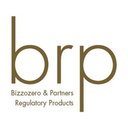
Patrick Genazzi,
CEO of BRP Bizzozero & Partners SA,
Can you introduce BRP in few words?
BRP Bizzozero & Partners SA assists banks, asset managers and financial institutions in managing constantly evolving international regulatory changes. BRP SA specialises in the management of cross-border risks for private banking, credit activity and the sale of financial products, through its Country Manuals and regulatory research. The services which BRP SA offers also include risk management, compliance and governance tools and advisory services for Executive Managers, Compliance Departments and Boards of Directors.
BRP SA has developed a strong presence in Switzerland through its headquarters in Geneva and a branch in Zurich, which was opened in 2014. Its global reach includes a presence in London, Luxembourg and Singapore. BRP SA provides pragmatic solutions and tailored and specialised services covering over 150 countries to more than 250 banks and 900 financial intermediaries world-wide.
What is new at BRP?
BRP SA recently developed a new service called “Private Banking Cross-border – Assessment of Regulatory, Civil and Tax Risks”
What is this about?
This service allows financial intermediaries to quantity their cross-border risks and answer questions such as:
What is my regulatory, legal, civil and tax exposure in my chosen target countries? How much does it cost to cover additional cross-border dimensions such as product placement, tax issues and suitability? What would the cost of using digital cross-border solutions? What is my opportunity cost?
These are typical questions that most financial Groups are still unable to answer. The main reason for this is that Banks and financial intermediaries in general are not used to quantifying their cross-border risks.
Based on this consideration BRP has developed a unique methodology in order to estimate risk exposure to target markets. Today we cover Argentina, Belgium, France, Germany, Italy and Russia. The scope will be expanded to other key countries soon.
Practically speaking our team undertakes a country-focused analysis aimed at evaluating the exposure of a financial intermediary with respect to foreign financial regulation, foreign tax issues and civil and commercial risks.
The purpose of the analysis is to quantify, by estimating an associated amount, the eventual risk of being fined for the illicit provision of financial services and/or placement of financial products, of refunding clients for inappropriate or unsuitable investment recommendations or of being considered a taxpayer and/or a withholding agent in the relevant country.
The analysis takes into consideration:
- Concrete numerical data (number of clients, frequency of business travels, etc.);
- Specific risk indicators for:
- Regulatry risks (meeting and call reports, contracts, adequate waivers, portfolio screening, etc.);
- Civil and cmmercial risks (content of the risk and investment profile, adequacy of advisory agreements, availability of relevant data on financial products;
- Tax suitability issues and tax risks (indicatrs suggesting the existence of a permanent establishment abroad, withholding agent liabilities, etc.).
- During the process BRP also challenges the financial intermediary on its capacity to deal with the fundamental issues at the core of a modern fit-and-proper approach to a cross-border risk mitigation strategy. The four main fundamental principles are:
- First a transversal approach for cross-border business. A financial intermediary should be able to manage at the same time the rules governing financial services, placement of financial products, the client’s tax situation as well as the impact on suitability.
- The second is the capacity to define the concept of a client for financial services purposes and to coordinate this notion with the concept of an ultimate taxpayer.
- The third relates to the capacity to implement suitability processes by integrating data relating to product governance and a target market.
- The fourth reflects the opportunity to adopt an asset class approach for investment advisory purposes.
The third and fourth point are of particular relevance to application of the third-country regime as defined by EU regulation, a significant and topical issue, especially in the context of Brexit.
In a world where cross-border risks constantly increase due to paradigm changes defined by foreign regulators, an objective assessment of cross-border risks will allow management to not only identify the necessary steps in terms of defining a strategy, but also aid in budget allocation, in particular concerning investment in digital solutions.
Download our Cross-border risk assessment here


